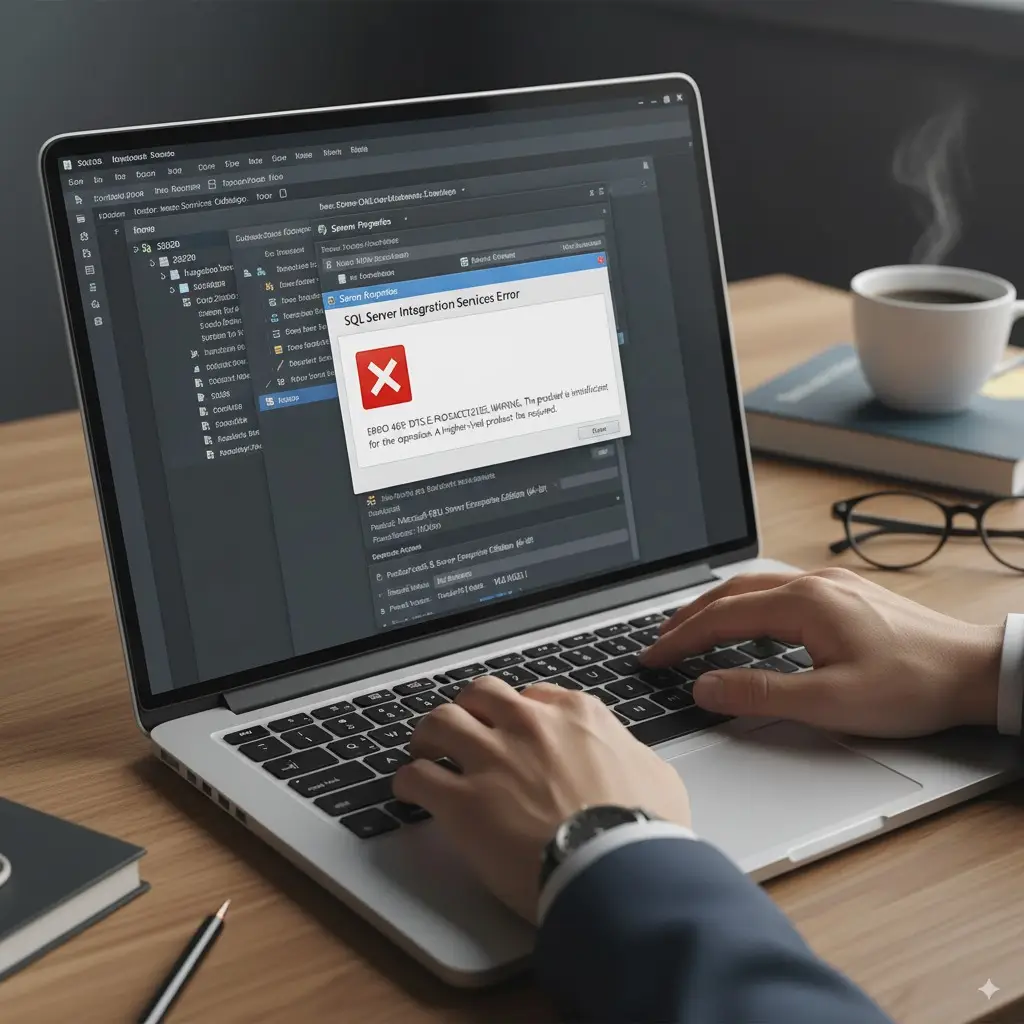SSIS 469 Error Explained – Troubleshooting, Fixes, and Prevention (2025 Guide)
In my years of dealing with SQL Server migrations, imports, and automation jobs, this code has shown up more often than I’d like. The good news is that Once you understand what triggers it, fixing it becomes much less intimidating. In this blog, we’ll look at why the error happens, how to solve it step by step, and how to avoid it in the future.
What Exactly is SSIS 469?
Think of SSIS as the engine that moves and transforms data. Like any engine, if one small part is out of place, the whole thing refuses to run. SSIS 469 is basically the system’s way of saying:
“Something in this package doesn’t match what I need.”
It usually appears during:
- Moving data between two different servers
- Running packages after an SQL Server update
- Importing heavy files (Excel, CSV, Oracle, DB2, etc.)
- Using third-party drivers or outdated components
Instead of looking at it as a mysterious bug, see it as a compatibility warning. The system is struggling to connect all the pieces.
Why Does SSIS 469 Show Up?
From what I’ve seen, the SSIS 469 error usually comes down to a handful of familiar issues. It actually took me a while (and a lot of late-night debugging) to pin them down, but these are the main ones:
Driver issues – Missing or outdated OLE DB/ODBC drivers are one of the most common reasons, especially when dealing with Excel or Oracle sources.
File or folder permissions—If the account running your package doesn’t have access to a certain file path, SSIS will fail instantly.
Corrupted package files—Moving packages between servers sometimes breaks the XML structure inside the file.
Data type mismatches—for example, one system sending nvarchar while the other expects int. That kind of mismatch almost always triggers the 469 error.
SQL/Windows update gaps—Sometimes, an unpatched SQL Server or missing Windows update makes older packages stop working until the latest service pack is installed.
Step-by-Step Fix Guide for SSIS 469
Here’s the exact process to use when you face such error:
1. Check Drivers First
If you’re connecting to Excel, Oracle, or DB2, install the latest drivers.
Microsoft’s Access Database Engine often resolves Excel-related errors.
Make sure you install the 64-bit version if your SQL Server is 64-bit (a common mistake).
2. Validate All Connections
In SSIS Designer, right-click every connection manager.
Test the connections one by one.
Incorrect credentials or expired logins can cause hidden failures.
3. Turn on Logging
Enable detailed package logging.
Check exactly which task triggers the error.
Logs can reveal if it’s a driver, file, or schema mismatch.
4. Apply Updates
Run the latest SQL Server service pack.
Check for Windows updates that may have broken compatibility.
5. Rebuild Damaged Tasks
If one data flow task refuses to work, delete and recreate it.
Copy-paste fixes rarely work with corrupted XML.
The “SSIS 469 Download” Confusion
Many people Google “SSIS 469 download” expecting to find a magic patch. The truth is there’s no single file called that. What they’re usually looking for is one of these:
- Official Microsoft SQL Server updates
- Driver packages (Native Client, ODBC, Access Database Engine)
- Community scripts to repair or migrate packages

SSIS-469 “Jav” and “”Uncensored”—Clearing the Confusion
If you search online, you’ll notice strange results like “SSIS-469 jav” or “SSIS-469 uncensored.” These have nothing to do with SQL Server. They appear in search engines because of unrelated content tagging.
A Real Case Study
Here’s a real-world situation that illustrates how sneaky SSIS 469 can be.
A financial company migrated to SQL Server 2019. Their daily ETL job imported large Excel sheets into SQL. After migration, every package started failing with SSIS 469.
At first, they suspected permissions. Then they tried editing the package. Still no luck.
The actual problem? The server didn’t have the 64-bit Excel driver installed.
How to Prevent SSIS 469 Errors
Solving the error is one thing, but prevention saves you hours in the long run. Here are the best practices I recommend:
- Document Drivers & Versions
- Keep a list of every ODBC/OLE DB driver installed. It helps when you upgrade servers.
- Standardize Data Types
- Before building packages, align source and destination schemas.
- Always Back Up Packages
- Before moving or upgrading, export and save your SSIS packages.
- Keep SQL Up to Date
- Don’t skip service packs or cumulative updates.
- Use Logging From Day One
- Even if things are running smoothly, logs give you a trail to follow when problems hit.
Developer Tips for Faster Debugging
After countless hours fighting SSIS errors, I’ve learned it’s smarter to run one data flow at a time instead of everything at once—it makes spotting the problem so much easier.
Use BIDS/SSDT for testing—design tools often give clearer error messages than SQL Agent, which makes troubleshooting easier.
Check 32-bit vs. 64-bit settings – Drivers for Excel and Access can be picky, so make sure you’re running in the correct mode.
Closing Thoughts
The first time you see the SSIS 469 error, it honestly feels like you’ve just crashed into a brick wall.
What usually fixes it? Updating the drivers, checking folder permissions, making sure the data types on both ends actually match, and, of course, keeping SQL Server fully patched.
The real headache isn’t that it’s hard—it’s the back-and-forth testing to catch the exact point of failure. But once you know where to look, it becomes more of an annoying speed bump than a major roadblock. Still, if you follow a clear process, you can usually solve it in hours instead of losing days.
What really makes a difference, though, is prevention. Keeping your drivers and documentation up to date, sticking to consistent data design, and making regular backups will save you from most headaches before they even start.
Do that, and you’ll spend less time wrestling with error codes and more time actually building data solutions that matter.



